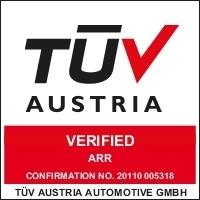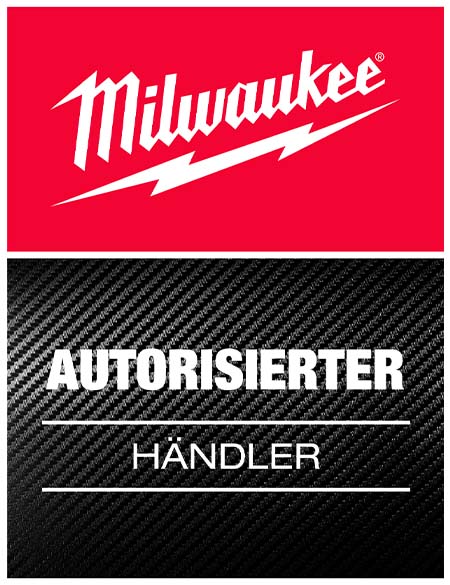
LED work lights FAQ:
The most important facts about lumens, lux, IP ratings and more
What do lumens really mean, and why is lux often more important? Why is beam distance measured at 1 lux, and what exactly do the IP classes stand for?
The world of LED work lights is full of technical terms. To help you keep everything clear and find the perfect lighting for your requirements, we have summarized the most important questions and answers for you.
Information on the correct light distribution and optimal application can be found in our LED Work Light Buyer's Guide.
If you have no further questions, you can proceed to our LED Work Light Product Catalog. There you will find a large range of professional LED lights from the brands Strands Lighting Division, MaiStone, and Osram.

Frequently Asked Questions and Answers (FAQ):
Yes. According to the German Road Traffic Licensing Regulations (StVZO) § 52 Paragraph 7, the installation of one or more work lights on multi-track vehicles is fundamentally legal. However, there are some regulations to observe:
- Prohibition of use while driving and only for work purposes: In principle, work lights may not be used while the vehicle is in motion. Their sole purpose is to illuminate the work area when the vehicle is stationary. Only vehicles used for the construction, maintenance, or cleaning of roads or facilities within the road space, or for waste collection, may switch on work lights while driving if the driving is part of the work process. If the use does not occur on public roads, for example on private/company property or agricultural land, use as a driving light is also permitted, as long as no road users are getting blinded.
- Separate switch: Work lights must be able to be switched on and off independently of the rest of the vehicle's lighting (such as parking or high-beam lights). In order to prevent accidental use while driving, work lights must always be operated via a separate switch.
Interpretation of StVZO § 52 Paragraph 7 by experts:
As a rule, work lights do not need to be separately registered in the vehicle documents. Unlike driving lights (such as high-beam or low-beam lights), LED work lights usually do not require a special type approval or E-marking, as they are not intended for driving on public roads.
Rarely, TÜV inspectors may ask for the necessity of a work light to be installed. Reference is made to the wording in the StVZO "for the illumination of work equipment and work sites," and a "work reason" is requested. For pickups and off-road vehicles, this could be, for example, an installed winch. Commercial vehicles that are visually identifiable as such, for example, a vehicle from a gardening and landscaping company, always have a plausible "work reason".
Very rarely, in addition to a separate switch, a requirement for automatic deactivation of the work lights when driving is demanded, based on the wording: "Work lights may not be used while driving." However, the legislator formulated this as an instruction for use and not as an instruction for installation, therefore this interpretation is extremely rare.
No. Since work lights are not approved for use while driving on public roads, they are not regulated by an ECE standard. Therefore, there can be no approval via an ECE standard, i.e., by means of an E-marking. Only a test for electromagnetic compatibility (EMC) according to ECE Regulation R10 is legally required for work lights that are installed on vehicles.
Strictly speaking, no. In Germany, the legal regulations are interpreted as follows: "A light approved for one function should not be used for another function." This naturally makes sense, as a high-beam headlight should not be used as a reversing light or vice versa. Rarely, this conclusion is also applied to the area of work lights, and the installation of a high-beam headlight as a work light is criticized by the TÜV inspector. However, this interpretation very rarely leads to problems, but it cannot be ruled out.
High-quality LED work lights are not only protected against dust and splashing water (IP67 certification), but also have an IP69K certification and can therefore be cleaned with a high-pressure cleaner at a short distance with hot water. An IP69K certification according to DIN standard 40050-9 requires a pressure of 100 bar with a water flow of approx. 15 l/min and a temperature of 80 °C, at a nozzle distance of 10 cm.
Explanation of the different IP classes:
First digit (Protection against solid foreign objects):
- 5 = Dust protected
- 6 = Dust tight
Second digit (Protection against water):
- 5 = Protected against water jets from a nozzle
- 6 = Protected against powerful water jets
- 7 = Can be temporarily immersed in water without damage
- 8 = Suitable for continuous immersion in water
- 9(K) = Protected against high-pressure/steam jet cleaning
For example, IP protection class 68/69K means that the work light is dust-tight and protected against high-pressure/steam jet cleaning as well as continuous immersion in water.
Lumen (lm): Measures the total luminous flux emitted by the work light. This value says nothing about the beam distance or the light pattern. A distinction is made between theoretical lumens (raw) and nominal lumens (measured, effective). The theoretical lumen value is calculated from the number and nominal value of the installed LED chips. However, these figures often differ greatly from the actually measured lumen value, as losses from the optical system (reflectors, lenses) and thermal effects from the LED chips are not deducted. It is therefore important when buying an LED work light to pay particular attention to whether the theoretical or effective/measured light output is specified and to compare them.
Lux (lx): The unit of illuminance. It indicates how much light actually arrives on a specific surface. In other words, lux measures the brightness at a specific point per square meter. Lumens, on the other hand, is the total amount of light a work light emits. The lux value thus says nothing about the light pattern or beam cone, but it is the most meaningful value for determining the beam distance of a work light.
- Beam distance at 1 Lux indicates the distance in meters at which the work light still produces an illuminance of 1 lux on a vertical surface. This value is considered a practical standard, as 1 lux is approximately the brightness produced by a full moon in a clear sky. It is assumed that at this level of illumination, objects and contours are still clearly visible to the human eye. The specification "Beam distance at 1 Lux: 500 m" means that at a distance of 500 meters in front of the vehicle, you still have a brightness of 1 lux, which is sufficient to recognize an obstacle in the work area, for example.
Watt (W): Watt does not necessarily describe the performance of the lamp, but is only a measure of power consumption. Therefore, for LED work lights, lumens are more indicative. A lamp that consumes little power and still provides excellent light is more advantageous from an energy perspective.
Flood-beam work lights are best for working in the near-field area up to approx. 75m. Spot beam spotlights are best for long distances up to several kilometers, e.g., as a searchlight to locate distant objects. Combo (Duo) Beam LED work lights offer a homogeneous light pattern at short and long distances and are ideal, for example, for off-road use or as the main headlight for a tractor or other agricultural machinery.
You can find a detailed explanation of which work light variant is best suited for which application in our LED Work Light Buyer's Guide.
Our LED work lights are multi-voltage capable, meaning they can be operated on both 12V and 24V systems without any problems. However, always check the product description.
LED work lights are often used in extreme environments, so high-quality material is urgently needed to guarantee a long service life. A robust and lightweight aluminum housing with a lens made of shatterproof polycarbonate and stainless steel mounting brackets is the perfect choice for anyone who values quality and durability.
Agricultural and construction machinery work lights should have a bright, white light color of approx. 6000 Kelvin (Xenon White). The bright color reveals details that are not visible with a warm white light color due to the higher red spectrum, and it increases concentration and performance at work. However, very cold white, almost bluish light (with a color temperature well above 6500 K) is very strenuous for the eyes in the long run and should be avoided. In addition, bluish light is reflected even more strongly by dust, metal, rain, and snow.
LED work lights can affect the vehicle's electronics and cause radio interference. The consequences of electromagnetic interference range from a crackling sound in the radio to a complete machine standstill and should therefore not be underestimated.
EMC stands for Electromagnetic Compatibility. If the work light has an EMC ECE R10 certification, it is approved for installation on a vehicle, and it is confirmed that its electromagnetic radiation is within the legal limits.
ECE-R10 covers two main areas of EMC:
-
Immunity: The ability of a vehicle or component to withstand external electromagnetic interference without its function being impaired.
-
Emissions: The limitation of the electromagnetic interference generated by the vehicle or the component itself, so as not to interfere with other electronic devices.







Follow Ullstein Concepts